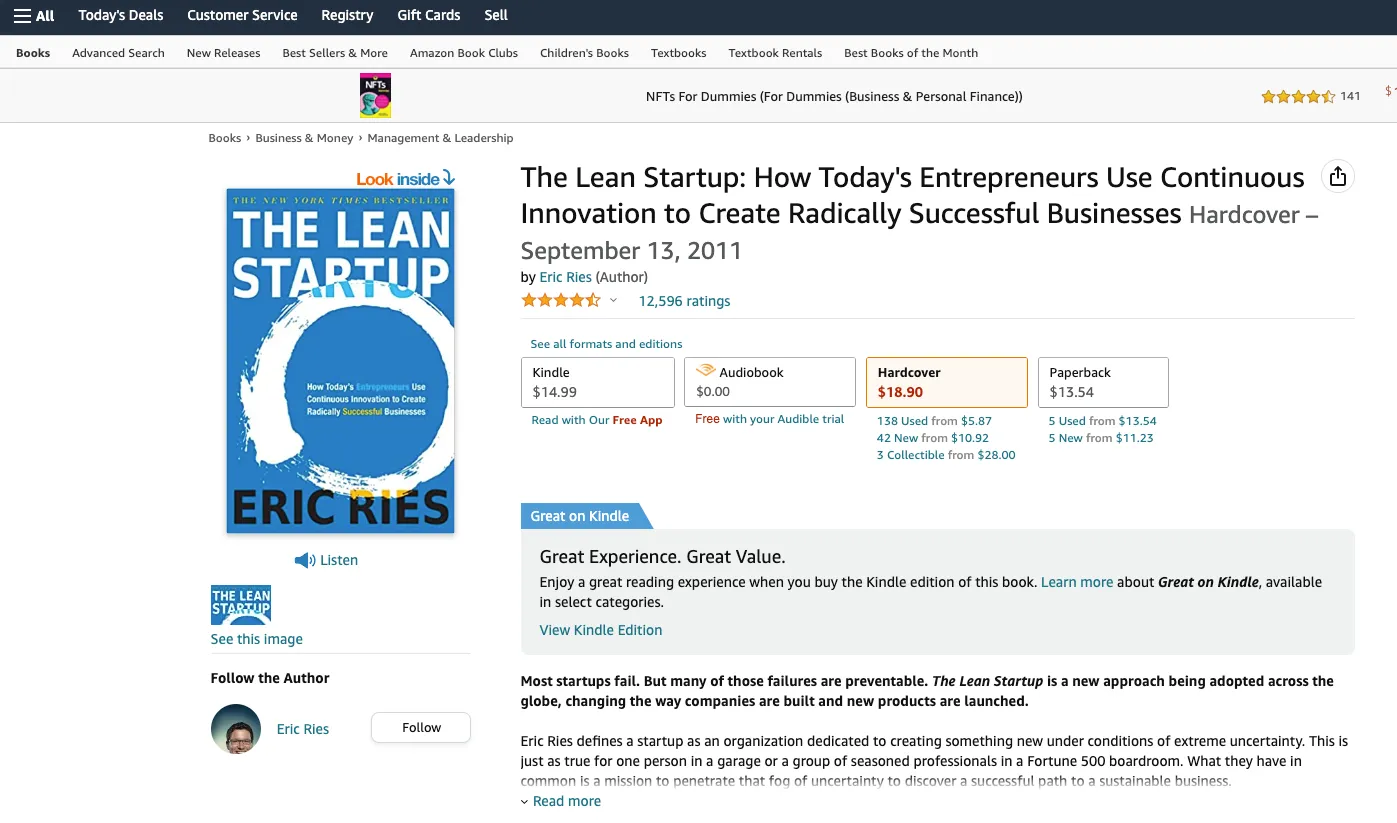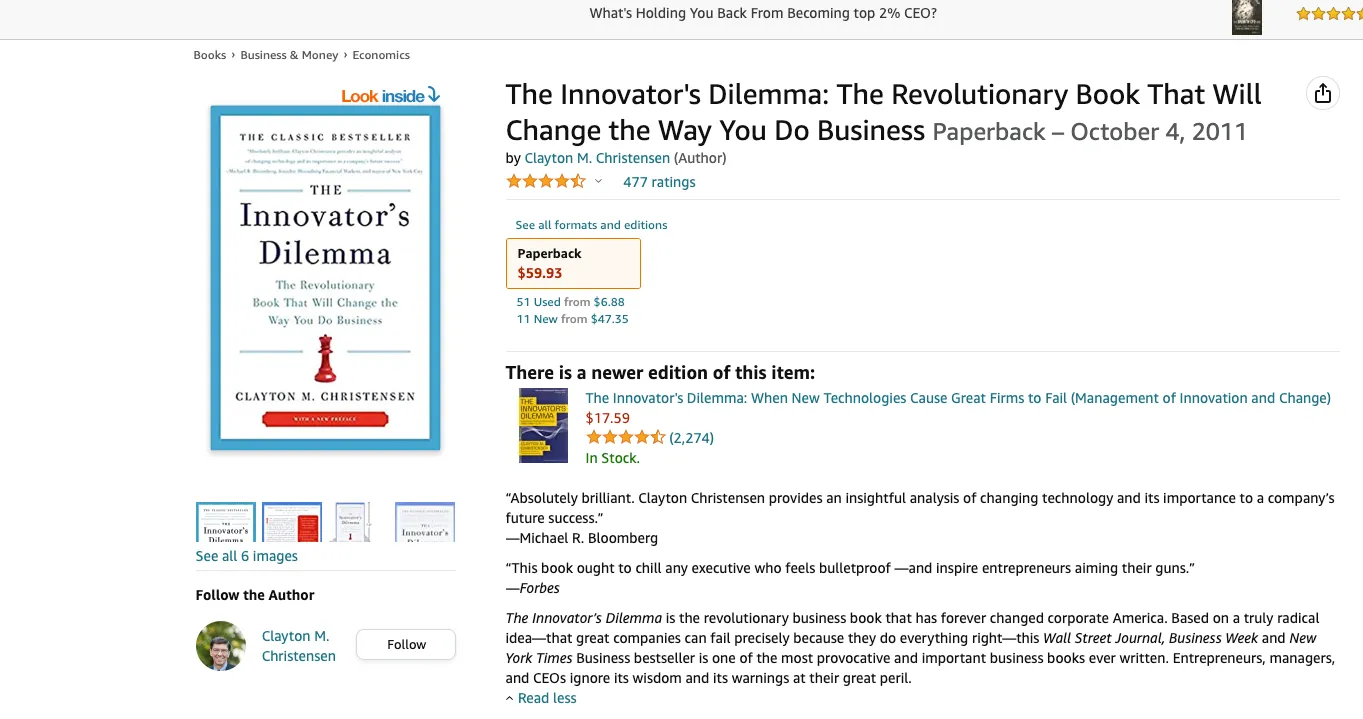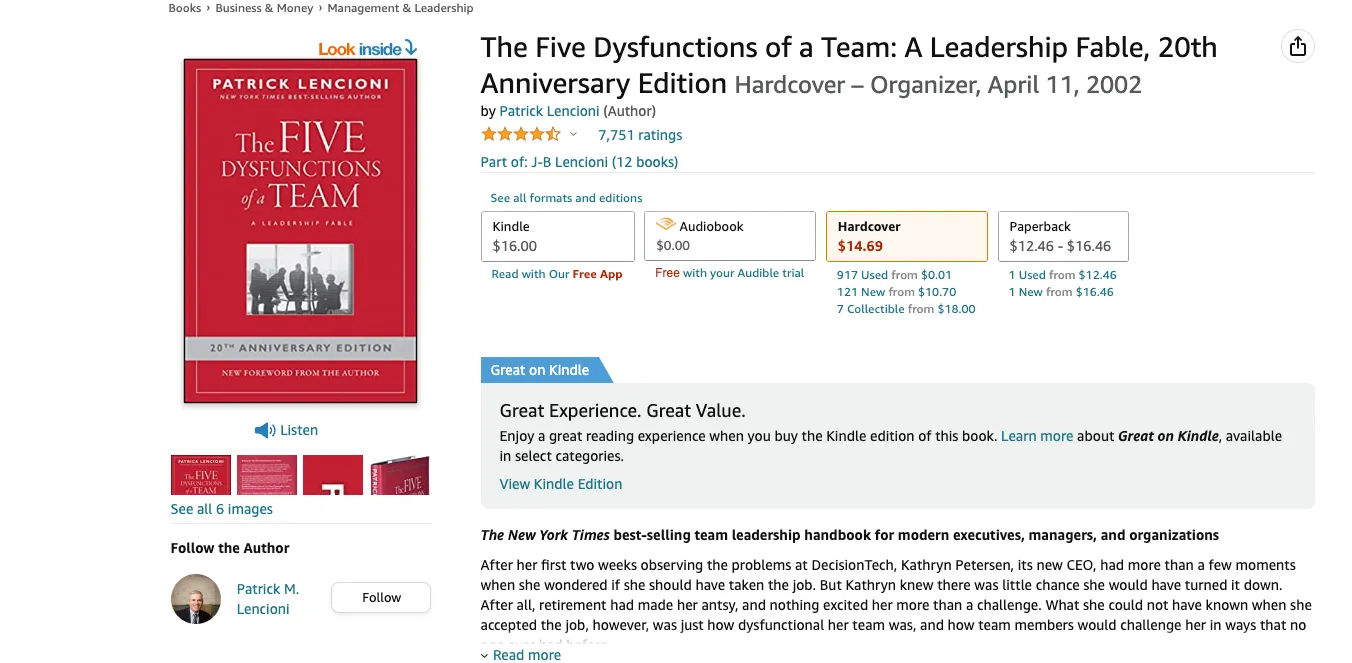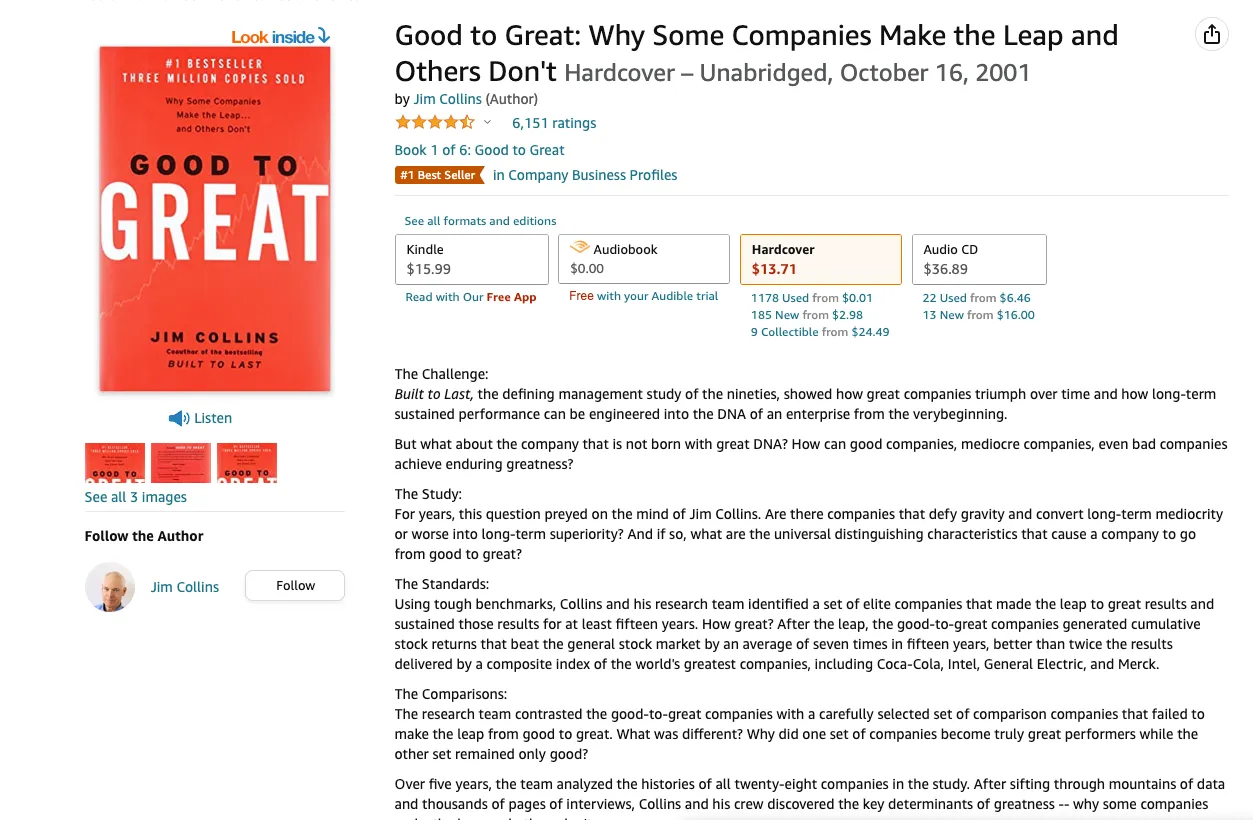The 10 Must-Read Books for Tech Leaders



Tech leaders play a crucial role in guiding organizations toward success as technology continues to shape our world and drive innovation. Staying informed and learning about the complex and rapidly changing technology landscape is critical for these leaders. Our list of 10 must-read books for tech leaders provides valuable insights and practical guidance. From understanding employee motivations to managing disruptive threats, these books cover a wide range of topics and provide the tools and knowledge you need to lead successful organizations. Besides sharing a brief summary of each book, we'll also provide concrete examples from them. No matter your level of experience, these books offer valuable lessons and strategies for achieving your goals and driving your software organization's growth.

Keypup was largely inspired by this book, which is why we had to start the list with it. It explores the practices and principles of high-performing technology organizations and provides a scientific basis for why these practices lead to better outcomes, including faster delivery of high-quality software, improved security and stability, and increased organizational performance.
Tech leaders should read this book to gain a better understanding of DevOps and Lean software development principles and practices. For leaders who want to drive improvement and transformation in their organizations, this book provides actionable insights and data-driven evidence of the benefits of these approaches.
Here are a few examples:
Tech leaders can increase their team's speed and efficiency by implementing continuous delivery and deployment processes. To accomplish this, a software delivery pipeline needs to be automated, and customers need to be provided with small, incremental updates on a regular basis.
Tech leaders can drive cultural change through collaboration, continuous improvement, and blameless postmortems. In this way, silos are broken down and a collaborative and trustful culture is fostered.
Lean principles emphasize continuous experimentation and rapid iteration, both of which are good ways for tech leaders to improve their product development process. This reduces waste and speeds up delivery by identifying and resolving issues faster.
Tech leaders can improve their processes and decision-making by implementing metrics and feedback loops. In this way, they can make data-driven decisions based on real-time data and insights about their processes.
Tech leaders can increase their team's efficiency and reduce errors by automating repetitive tasks and using tools to manage their processes. This helps to free up time for more strategic work and improves the accuracy of their processes.
A DORA Metrics dashboard is a good way to get started with software metrics and feedback loops.

This book introduces the Lean Startup methodology, which emphasizes continuous experimentation and iteration in the development of new products and businesses. It is a must-read for tech leaders looking to bring innovation to their organizations.
Several practical examples are offered in the book, including:
MVP is a stripped-down version of a product that is built and tested with real customers to validate the key assumptions behind the product and gather feedback for improvement.
This is a method of comparing two versions of a product or marketing message to determine which is more effective. For example, a company might run an A/B test of two different website designs to see which one results in more conversions.
This is a process of speaking with potential customers to validate the problem that the product is trying to solve and gather feedback on the product concept.
Based on the results of continuous experimentation, a company may choose to pivot, or make a significant change to the product or business strategy, or persevere and continue down the current path with confidence.

This book explores the science of motivation and argues that traditional incentives, such as money, are not always the most effective way to motivate employees. Tech leaders should read this book to better understand what drives their employees and how to create a motivating work environment.
Here are a few examples of potential incentives for employees:
Allowing employees to have control over their work, such as choosing when and where they work, can lead to higher motivation and engagement.
When employees feel that their work has meaning and is aligned with their values, they are more likely to be motivated and engaged.
Providing opportunities for employees to improve their skills and advance in their careers can be a powerful motivator.
Acknowledge employees' hard work and contributions, and celebrate their achievements, in order to create a culture of recognition and appreciation.
Investing in employees' professional development and providing them with opportunities for growth and advancement can lead to higher motivation and engagement.
According to Drive, traditional incentives, including bonuses and financial rewards, are effective in the short term, but can be ineffective in driving engagement and motivation over the long term. By focusing on providing employees with autonomy, purpose, mastery, recognition, and growth opportunities, organizations can create a more motivated and engaged workforce. A good approach to facilitating autonomy is the ability to track and measure employee performance. Using sprint metrics can help the team feel more accountable but also provide valuable insights on how the team actually delivered against goals.

This book explores why successful companies can struggle to maintain their success in the face of technological disruption. It provides valuable insights for tech leaders on how to recognize and respond to disruptive threats and opportunities.
Here are just a few examples:
Disruptive innovations often start out as low-end or niche products, but over time they can displace established products and companies. Tech leaders should be on the lookout for disruptive innovations and understand how they might impact their businesses.
Even if a disruptive technology seems insignificant or unimportant, it's important to pay attention to it and understand how it might evolve over time.
Rather than trying to integrate disruptive innovations into the existing business, tech leaders can create dedicated business units to focus solely on these innovations. This can help to minimize disruption to the existing business while also allowing the company to explore new opportunities.
Disruptive innovations can be difficult to predict and often take time to develop. Tech leaders should balance short-term goals, such as profitability and efficiency, with long-term goals, such as innovation and growth.
Disruptive innovations often require taking risks and trying new things. Tech leaders should embrace experimentation and be willing to fail in order to find new solutions and opportunities.

This book explains the challenges of introducing new technologies to the market and provides a roadmap for successfully bridging the "chasm" between early adopters and the broader market. It is a must-read for tech leaders looking to bring new products and services to market.
Here are a few examples:
Focus on a specific, well-defined market segment that is receptive to new technologies. This can help to establish a foothold in the market and generate early successes.
To effectively bring a product to market, technology leaders must also consider the supporting elements, such as marketing, distribution, and customer support.
By generating early successes and positive word-of-mouth, tech leaders can create a bow-wave of momentum that can help to attract other customers and drive further adoption.
Working closely with early adopters and other reference customers can provide tech leaders with valuable insights and feedback that can refine the product and make it more appealing.
Establish a clear, compelling marketing message that resonates with the target market and distinguishes the product from its competitors

This book provides a practical guide to creating and refining business models, with a focus on innovation and customer value. Tech leaders should read this book to better understand how to create and sustain a successful business
The book provides practical tools and techniques for implementing those models in practice:
A successful business is built on a clear and well-defined business model. A tech leader should identify the business' value proposition, customer segments, channels, revenue streams, key resources, key activities, and key partners.
Delivering value to customers is the key to creating a successful business. Leaders in technology should understand the needs and wants of their customers and develop products and services accordingly.
Business models are constantly changing, so tech leaders must be prepared to experiment and iterate as needed. The business may need to try new marketing strategies, launch new products, or pivot in a new direction.
It is essential for a business to have a strong team in order to succeed. A tech leader should build a team of talented and motivated individuals who are committed to the company's success.
In today's rapidly changing business world, innovation is essential. A culture of innovation should be cultivated within technology companies and employees should be encouraged to think creatively and take risks.

Five common barriers to team effectiveness are discussed in this book, along with practical advice for overcoming them. The book will help tech leaders better understand the dynamics of their teams and how to create a high-performing culture.
As the book suggests, tech leaders can become more aware of their teams' dynamics and build high-performance cultures, including:
Any successful team is built on trust. Creating a safe and supportive work environment, encouraging open and honest communication, and being transparent in their own actions are ways to build trust among team members.
Team performance is enhanced by healthy conflict. Leaders should encourage team members to express their opinions and engage in productive debates, while also managing conflicts as they arise.
It is the responsibility of tech leaders to ensure that each member of the team is fully committed to the goals and objectives of the team. To achieve this, a shared vision and a common purpose should be created.
Team members should be held accountable for their actions and encouraged to take ownership of their work by tech leaders. As a result, a culture of accountability can be built and performance can be improved.
Tech leaders should prioritize team needs over individual goals and focus on results. Collaborative and teamwork cultures can be fostered this way.


Based on the author's own experiences as a tech entrepreneur and investor, this book offers insight into the challenges of building and scaling a tech company. To better understand the practical realities of growing a business and the tough decisions that need to be made, tech leaders should read this book.
According to the book, the following are a few examples of tough decisions to be made when growing a business:
Hiring and firing are two of the most important decisions a leader must make. Leadership in technology calls for the ability to make tough decisions about personnel, even if it means firing someone who is not a good fit.
It is common for businesses to encounter crises, such as market downturns or technical issues. In order to protect the business, tech leaders need to manage crises effectively and make difficult decisions.
It is often necessary to take big risks when growing a business. To stay ahead of the competition, tech leaders must be willing to make bold decisions, such as investing in new technologies or entering new markets.
Business growth requires balancing short-term and long-term goals. It is important for tech leaders to be able to make tough decisions about prioritizing resources and allocating them in a way that will benefit the business in the long run.
A business's success depends on its ability to build and lead a high-performing team. Technology leaders must be able to make tough personnel decisions, such as promoting the right people and holding others accountable.

Providing practical advice for achieving similar success, this book examines the characteristics of companies that have made the leap from "good" to "great." This is an excellent resource for tech leaders looking to build lasting, successful companies.
According to the book, tech leaders can better understand what it takes to build a lasting, successful organization by following these pillars:
The most successful tech leaders focus on what they're good at and what they're passionate about, then build their companies around it. The Hedgehog Concept is a framework that helps leaders understand what they should focus on in order to be successful.
The process of building a successful company is similar to pushing a giant flywheel. It is essential for tech leaders to keep pushing the flywheel, even when progress is slow, to build momentum and ultimately succeed.
It is important for tech leaders to focus on building the right team before they worry about strategy and tactics. Building a successful organization begins with hiring the right people.
The ability to balance optimism with realism is essential for tech leaders. While remaining optimistic about the company's future, they must also be realistic about the challenges and difficulties it will face.
It is important for tech leaders to create a culture of discipline within their organizations. Creating systems that reinforce desired behaviors and hold people accountable is one way to accomplish this.

The book offers a unique perspective on leadership and personal growth, emphasizing the power of possibility and cultivating a positive attitude. The book will help tech leaders gain new perspectives on how to lead and inspire their teams as well as how to continue growing and evolving personally.
Here are just some examples:
The challenges tech leaders face should be reframed as opportunities rather than obstacles. According to the authors, the way a situation is framed has a significant impact on how it will turn out.
Leaders in the tech industry should lead with possibility rather than authority. Rather than telling their team what to do, they need to inspire and engage them by painting a picture of what is possible.
Leaders in the tech industry should promote a culture of innovation and creativity by encouraging their team to break the rules and think outside the box. By creating a safe environment for people to try new things, we enable them to feel more comfortable taking risks.
Results and outcomes should be the focus of tech leaders. Beyond isolated metrics, they should focus on what is truly important, such as customer satisfaction and employee engagement. Metrics should, therefore, be used to support overall goals.
Taking responsibility for their own as well as their team's success is essential for tech leaders.
To conclude, these 10 must-read books provide valuable insights and practical guidance for technology leaders who wish to lead successful organizations. From understanding team dynamics and creating high-performing cultures to managing disruptive threats and creating sustainable business models, these books provide tech leaders with a wealth of information and resources. These books offer valuable lessons and strategies that can help you achieve your goals and make a positive impact in the technology world, regardless of your experience level.